Last Updated on September 8, 2025 by Michelle
I’m kinda a grain nerd. Grain mills, wheat berries, ancient grains & fresh milled flour. I can talk about those things for days.
Kamut is one grain that has a special place in my heart. BTW, if you haven’t figured it out yet, Kamut and Khorasan are the same grain. We’ll talk about why it has two (or sometimes three!) names in a minute.
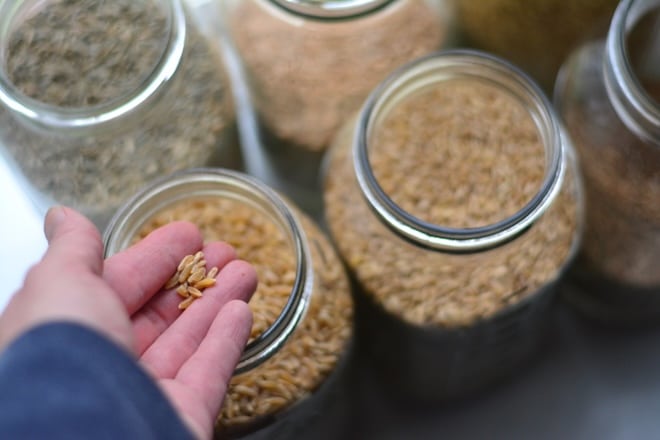
But for now, all you need to know is that I’ve milled, cooked, flaked, and baked with lots of different grains.
And Kamut is at the top of the list of my favorites.
That’s because this ancient, all-purpose grain can do it all. Breads, pastries, desserts, pasta–you name it–Kamut will make it, deliciously.
What is Kamut (Khorasan)?
What is Kamut? Well, I’m so glad you asked.
Khorasan is a type of grain. Kamut is the trademarked name for the same grain. The reason for this is because a Montana family discovered and fell in love with Khorasan grain, and wanted to trademark it to preserve the organic, wholesome nature of the grain. In order to sell this grain as “Kamut,” it needs to be certified organic and pass certain tests to maintain the Kamut name. Otherwise, Khorasan it is.
So Khorasan is the same grain, without the trademark. If you do some research and feel more comfortable with the Kamut trademark standards, you’ll pay a slightly higher price than you will purchasing the grain under the name Khorasan. It isn’t cheap to maintain trademark status!
On the flip side, if you love this grain and are looking to save a few bucks, purchasing “Khorasan” will be like buying the no-name Kamut. Especially if you’re purchasing organic Khorasan grain from a source you trust, you’ll still be getting amazing, high quality grains, just without the price of the trademark.
From here on out, I’ll mostly be referring to this grain as “Kamut” because that’s what I call it in my home (trademark or not), and because it also happens to be easier to type.
Kamut has also become the “household” name for this grain as it gains new popularity. Kinda like the way that lots of folks (my mother-in-law included) refer to all tissues as “Kleenex.”
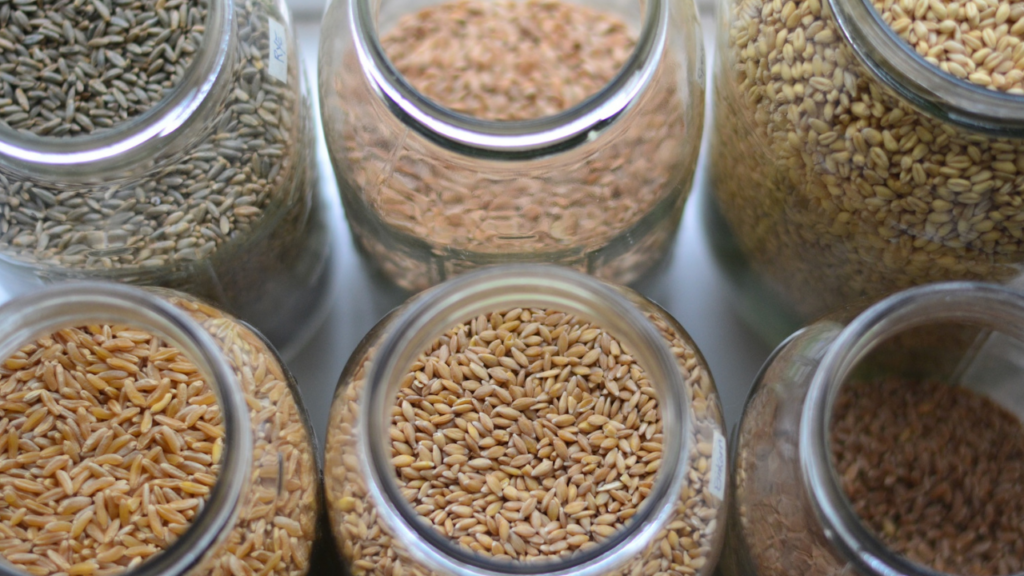
History and origin of Kamut
What is Kamut (Khorasan) and where did it come from?
Just in case Kamut didn’t have enough names already (Kamut/Khorasan), it’s also called King Tut Wheat.
What’s not to love about one grain with three names?
It’s rumored that Kamut grain was found in the tomb of King Tut (or other ancient pharaohs), which would mean Kamut is up to 3,000+ years old. However, these claims are unsupported, and while the King Tut theory may be true, it’s also possible that the Kamut grains were obtained from an Egyptian street vendor rather than directly from ancient pharaoh’s tombs.
Either way, this grain has been around a while and has served as a farming staple in the fertile crescent for many thousands of years. In fact, the region that primarily grew this grain was literally known as the Khorasan Region back in the day.
Is Kamut gluten free?
While Kamut is an ancient grain with a different protein structure than modern wheat, it does contain gluten.
Some folks who are gluten sensitive claim they can tolerate the gluten in ancient grains (like Kamut) better than the gluten in modern wheat. But Kamut is not safe for folks with celiac disease.
Technically Kamut is higher in protein than modern wheat. This means that Kamut actually has a higher gluten potential than most modern grains.
- Kamut/Khorasan grain has 14-17% protein
- Modern grains have about 10-13% protein
While Kamut technically has a higher gluten potential than modern grains, due to it’s protein content, you’ll notice differences when baking Kamut bread. The protein/gluten in Kamut flour tends to make a stretcher in dough, but will rise less. You’ll get all the stretch and strength in bread dough made with Kamut flour, but you’ll notice your bread doesn’t rise quite as much and has a tighter (sometimes more dense) crumb than it would with modern wheat.
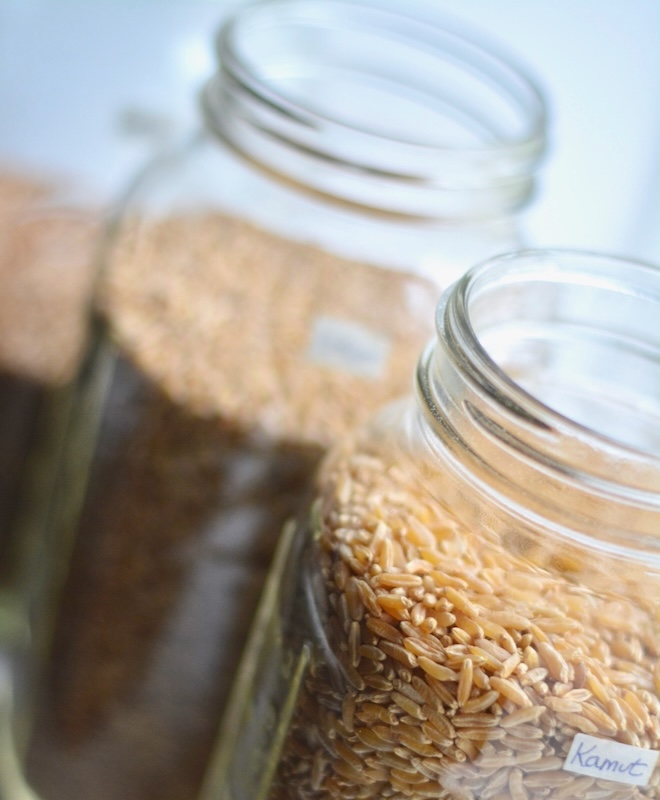
How is Kamut different from modern wheat?
Well, for starters, Kamut is mostly unchanged from its ancient days. This means that it’s a high protein grain, but since it hasn’t been changed and bred to create fluffy bread, Kamut bread will rise a bit less than bread made with modern wheat.
To combat this, you can always add vital wheat gluten to your Kamut breads. If you’re looking for a source for vital wheat gluten, I add mine to my Azure order. It’s also available from other online retailers. I like to use a ratio of 1 tablespoon vital wheat gluten per cup of flour in bread.
- Kamut wheat berries are large in size and closely related to Durum wheat.
- Since Kamut is an ancient grain and (largely) untouched by modern wheat breeding, its protein and gluten structure is different from modern wheat. Gluten is made up of protein, and there are two main proteins in wheat. These days, wheat is bred specifically to have a higher content of glutenin (one of the two gluten proteins), meaning bread made with modern wheat will rise higher, faster. Kamut has a different protein/gluten balance, meaning it will behave differently when making bread.
- Kamut may be easier to digest than modern grains due to it’s higher mineral, antioxidant, and healthy fat ratios.
- Kamut has a rich, buttery flavor that you simply won’t find in modern grains. Because modern wheat is bred specifically to increase the gluten potential and grow faster (modern wheat), the taste and flavor of the grains is just not going to be a priority.
How to bake/cook with Kamut (Khorasan)
How to use Kamut
Kamut has a million uses. From Kamut flour to using the whole Kamut wheat berries, you’ll never be bored with this amazing, ancient whole grain.
- Mill Kamut into buttery, golden flour (my personal favorite way to use Kamut).
- Turn Kamut into puffed wheat (difficult to do at home and sometimes requires special equipment, but worth a shot).
- Cook Kamut wheat berries and use them in place of rice, like pasta in a pasta salad dish, in place of couscous, or like oatmeal.
- Flake Kamut wheat berries, with a flaker, and use them in place of oats (learn how to do this below).
- Use in place of pasta or rice in soups and stews.
- Turn Kamut berries into nutritious sprouts and use on salads, soups, or sandwiches.
- Make Kamut pasta.
- Cooked (or sprout) Kamut and add to smoothies for a nutrient boost.
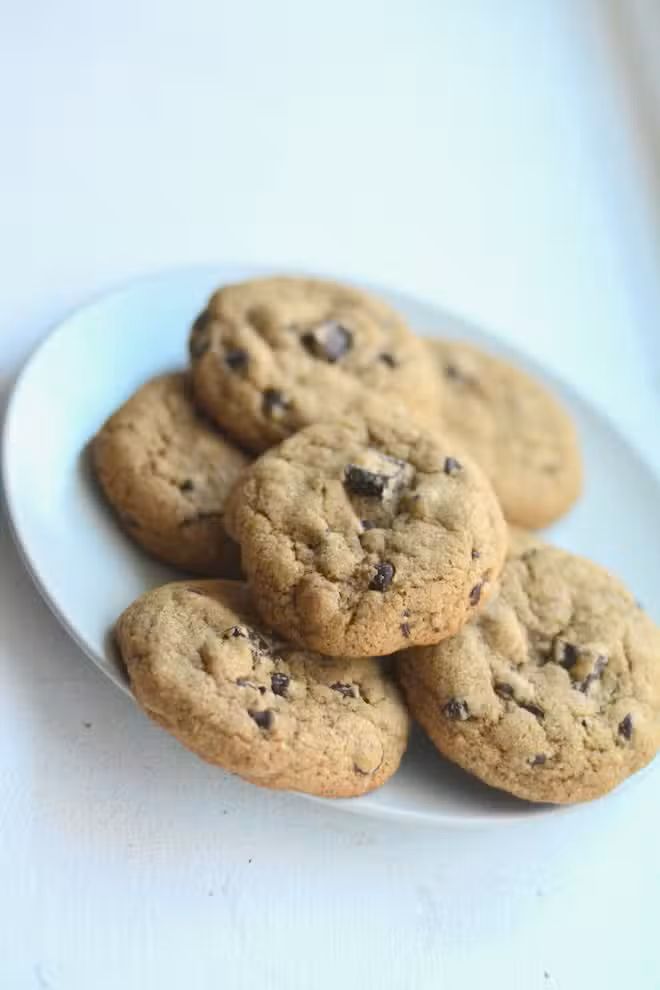
What does Kamut/Khorasan taste like?
The flavor of Kamut is complex, buttery, rich. Similar in flavor to Einkorn, but a little more rustic and nutty. Wholegrain Kamut will have an earthy undertone, thanks to the inclusion of the bran + germ. All-purpose or sifted Kamut flour will be more mild in flavor and also missing some of the nutrients in wholegrain Kamut.
If you’re not used to the flavor of whole grains, Kamut is a great place to start thanks to it’s sweet, buttery flavor.
How to mill Kamut grains into flour
Turning any wheat berry into flour all starts with a good grain mill. Technically you can mill grains with other countertop appliances (read more about that here) like a blender, food processer, or coffee grinder, but long-term, you’ll want to invest in a mill designed specifically to turn hard wheat berries into fine flour.
It’s helpful to note that since Kamut starts out as very large sized kernels, the resulting flour will be slightly less fine than flour made from other wheat berries. Which is why if I’m baking delicate pastries or something that I want finer flour for, I actually turn to Einkorn over Kamut.
Regardless, if you want true wholegrain Kamut flour, you’ll need to mill Kamut wheat berries into flour.
To do this, simply use your grain mill to mill the wholegrain Kamut berries. For more detailed instructions on how to make flour at home, check out my post “how to make flour at home, with or without a grain mill.”
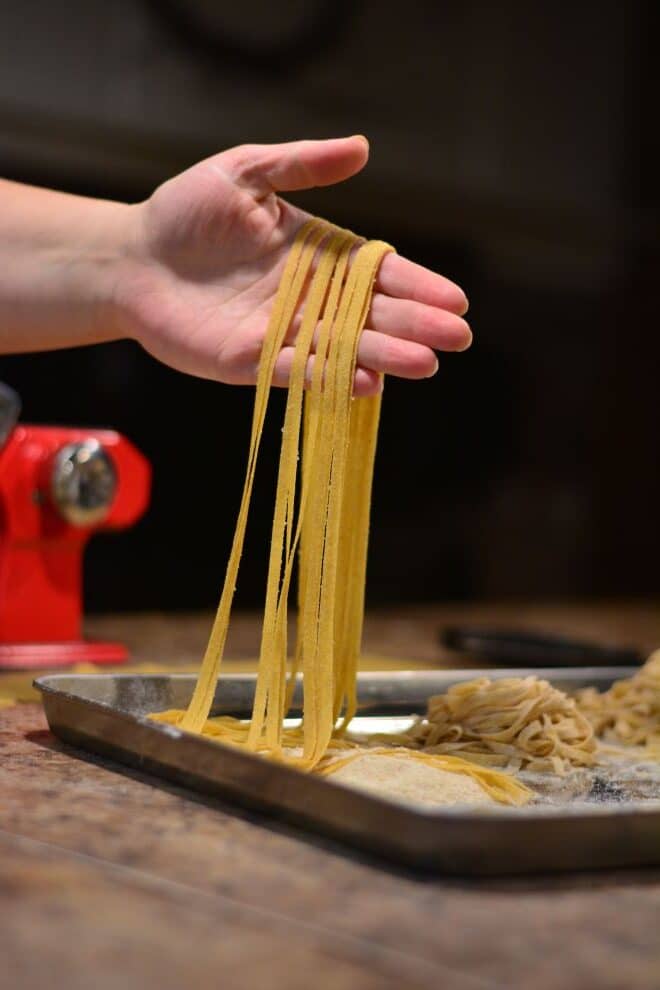
Where can I buy Kamut (Khorasan)?
- For me, the best quality and price I can find is Organic Khorasan wheat berries from Azure Standard. If you’re new to azure, use my code “soulyrested” to save 15% off your first order of $100 or more of the best food and ingredients. They’re an independent food supplier that delivers your order to a drop location near you. This saves you shipping costs, but even better it introduces you to a whole group of like-minded neighbors.
- My favorite seed/sprouting online store happens to sell Kamut wheat berries in 35 pound buckets, so it’s easy to stock up and store them indefinitely without even having to purchase a bucket separately.
- Your local natural food store just may sell Kamut by the pound. Although it’s still a rather niche grain, it’s gaining popularity and it seems that more stores are starting to carry it to meet demand.
- Check out bulk, organic Kamut/Khorasan wheat berries on amazon. These specific ones come from a small, organic family farm, although there are several decent options.
- Ask around! There’s a chance that local farmers are growing Kamut (or other awesome ancient grains).
How to flake Kamut
One of Kamut’s best kept secrets is that it flakes really well. But let’s back up a second.
What do I even mean by “flaking?”
You know those cardboard containers of rolled oats you’ve been buying your whole life? Turns out they’re already old, stale, and devoid of many of their original nutrients by the time you buy them and take them home.
But if you purchase whole oat groats instead of already-flaked oats and flake them yourself, you can get the full benefit of all the incredible nutrition in whole oat groats. Even cooler is that almost any grain can be flaked with a little bit of help, even Kamut. Your daily bowl of oatmeal just got upgraded. Find out more about my oat flaker machine here.
3 simple steps to flake Kamut
Flaking Kamut wheat berries like oatmeal can be done in three simple steps:
- Soak your Kamut wheat berries in filtered water for 10-12 hours (or overnight).
- Dry them in an oven or dehydrator at 150 degrees for 20-25 minutes. Make sure they’re actually dry to the touch. Yours might take longer than mine depending on climate, time of year, and other variables.
- Flake your soaked and dried Kamut berries through a flaker.
Learn more about flaking and how to use an oat flaker to make rolled oats.
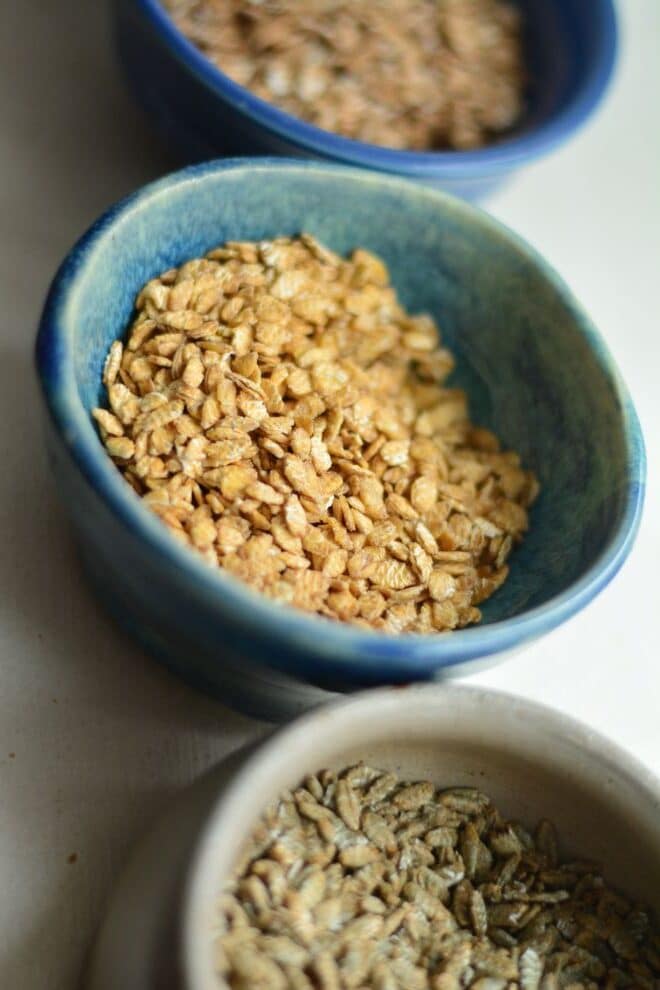
And boom! Just like that you have healthy Kamut flakes. Use as oatmeal, in breads, as granola or granola bars and in any way you’d use oats!
Just make sure that your Kamut berries are actually dry from the oven before you try to flake them. Running grains that aren’t dry enough through your flaker can gum up and damage your machine. We really don’t want that.
The reason they need to be soaked then dried is because the grains need enough moisture to actually roll/flake without cracking into a million pieces, but need to be dry enough to not gum up your flaker. And since Kamut berries are large in size, they need longer times than, say, Einkorn, to both soak and dry.
Kamut flour
Kamut flour vs. whole wheat berries
Real wholegrain flour will simply be ground wheat berries. One ingredient. Unfortunately, many (most) pre-milled flours on the market are heated & sifted until they’re barely recognizable from their original form.
Kamut all-purpose flour will essentially just be the starch (endosperm) of the grain. The rest will be sifted out and discarded.
“Whole wheat” Kamut flour will have a small portion of the bran + germ added back into the endosperm flour, but only after it’s been heated and defatted so it won’t go rancid.
Meanwhile, Kamut wheat berries have all the nutrients locked in. The bran around the outside of Kamut berries acts as a protective barrier or seal that protects the nutrients inside. Until the wheat berries are milled and the nutrients inside are exposed to air, all the amazing vitamins and minerals are locked in and preserved for years to come.
Then when you mill Kamut wheat berries into flour and use that flour right afterwards, you get to enjoy all the nutrition and benefits of eating real wholegrain flour.
Why you should mill your own Kamut flour
Pre-milled flour is a completely different product than fresh milled flour. Because the oils in the bran and germ of the wheat berry go rancid as soon as they’re milled, it’s pretty much impossible to sell flour that’s as nutritious as fresh milled. Now that I’ve (hopefully) convinced you that you need Kamut in your life, now let me convince you that simply buying Kamut flour isn’t enough. To get the full benefit of this amazing ancient grain, you should really consider milling your own flour.
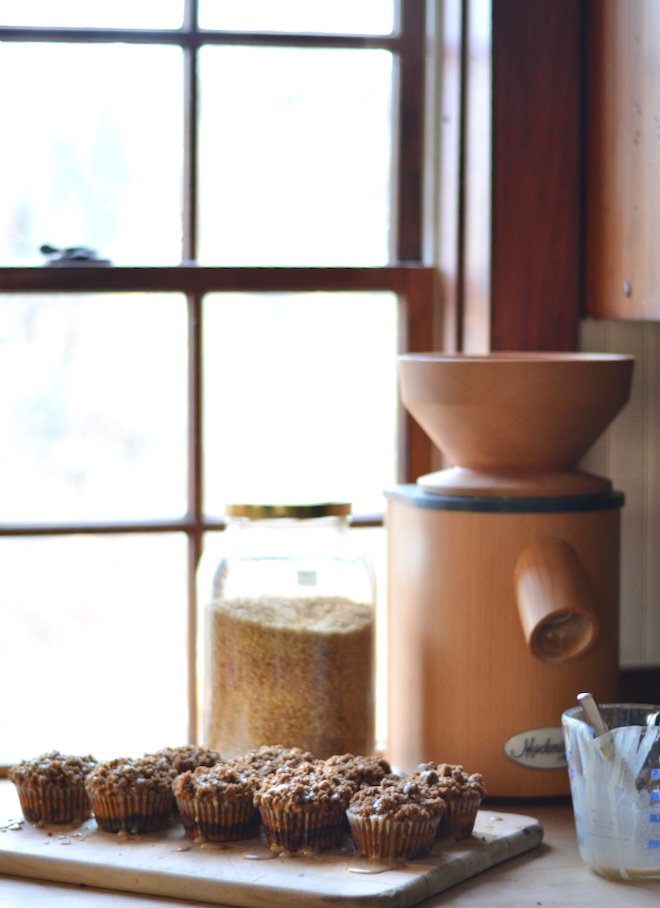
Reasons to mill your own flour
- Flour only keeps so long, but wheat berries last (basically) forever. Having buckets of unmilled flour in my basement gives me peace of mind, not to mention it’s convenient to never run out of flour.
- You can mill your flour minutes before you use it, locking in flavor and nutrients. Once you start milling your own flour, you just can’t go back to the bland, paste-y flavor of store bought flour. You’ll be shocked at the depth of flavor found in fresh milled flour. (Especially fresh milled Kamut flour!)
- Milling your own flour allows you to support specific farmers, or farmers you trust. Many farms will sell their wheat berries directly to consumers, whereas purchasing flour almost always requires a middle man.
- It’s cheaper to mill your own flour. I can purchase whole Kamut wheat berries in bulk for $1.40/pound. The cheapest Kamut flour I know of on the market is still $2.30+/pound. That’s a pretty steep difference when it’s so easy to make my own. Not to mention more nutritious.
- It’s fun to mill your own. Not only is milling your own Kamut flour cheaper, more flavorful, and more nutritious than purchasing pre-milled flour, but it’s just plain fun.
- Having Kamut wheat berries on hand not only allows you to mill fresh Kamut flour on-demand, but it also allows you to use the wheat berries in other ways, like the ones listed above. Get creative!
Comparing Kamut to other grains
Kamut vs. Einkorn
Both ancient grains, both Einkorn and Kamut are amazing, nutritious choices. And in fact, they’re rather similar in their buttery flavor and creamy yellow color. There are some differences, though, that I want to highlight.
–> Kamut is a very large-sized wheat berry, while Einkorn berries are very small in size.
–> Einkorn wheat berries will mill into very fine flour, while Kamut is harder to turn into fine flour.
–> Kamut’s history is a little dicer and harder to track than Einkorn’s, but they’re both grains that have been around for quite a while, and, for the most part, they’re both unhybridized by modern farmers.
–> Einkorn tends to be a bit pricier than Kamut, I think because the sheer size of the grain. Einkorn is also known for being very hard to husk, making it more costly and time consuming to process into clean wheat berries. Kamut tends to be more affordable.
–> Kamut tends to have stronger gluten than Einkorn. With it’s slightly higher protein content, Kamut will make more elastic dough and bread will rise just a bit higher with Kamut than Einkorn.
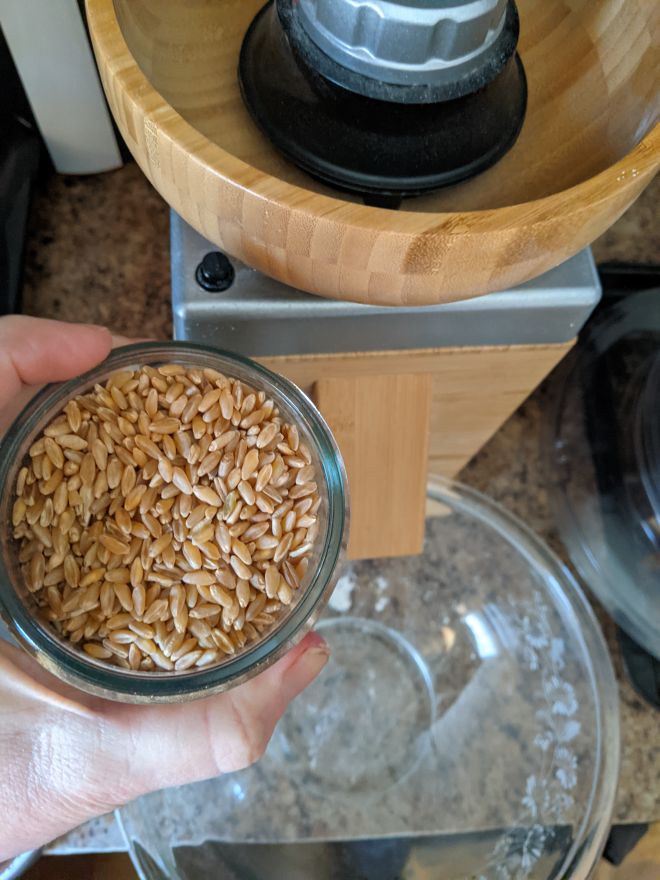
Kamut vs. Durum wheat
Kamut and Durum are closely related and have some similarities.
–> Kamut is better for making bread than Durum.
–> They’re both great for making pasta, although Durum’s very hard nature gives pasta the perfect bite.
–> Durum is a more modern grain, with ties closer to modern wheat. Kamut has been largely un-modernized.
–> Kamut has a sweeter flavor than durum, and a more elastic nature when used in doughs.
–> They both contain gluten.
Growing Kamut
How to grow Kamut (Khorasan) in your backyard: the easy way
I love vegetable gardening. But I had never in a million years considered growing grains. Until I saw and immediately purchased this book. I poured over it during a long, snowy winter and dreamed of wheat fields, tilling our whole yard into a wheat-growing-patch, and never purchasing wheat berries again.
The next spring, I planted several different kinds of wheat in small patches in my already-established veggie gardens and watched them grow all summer. Turns out, most grains are actually pretty easy to grow.
I mean, basically, you stick some grains in the ground, water and weed them, watch them grow, and eventually harvest, thresh, and store your harvest. There is a little bit more to it than that, but that’s the idea.
It turns out that wheat berries can really do it all. They’re not only ground into flour, but they’re also, literally, the seed of the wheat plant. So as long as you have organic (not sprayed) wheat berries, they’ll sprout wonderfully and grow well. Technically you can order specific wheat seeds to make sure they will sprout and haven’t been sprayed, but most any wheat you have on hand can be planted.
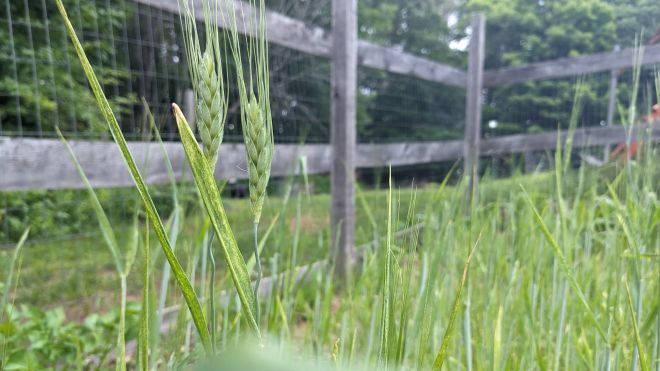
Grow Kamut in your backyard in 3 easy steps
Planting:
1) Plant your Kamut in the spring. Technically if you live in a not-Antarctic-like climate like I do, you could sow your Kamut in the fall, overwinter it, and let it continue growing in the spring. That’s called Winter Wheat. If it’s sown in the spring, grown throughout the summer, and harvested in the fall, that’s called Spring wheat. But, nevertheless, I only have the climate for growing Spring Wheat.
It’s helpful to note that although Kamut and other wheat are generally grow in rows at large farms, growing small patches of it in your backyard will benefit from being sown in boxes or thick rows. I’ve tried both 1’x1′ boxes, and 1′ thick rows, and both work well. If you sow your Kamut in “traditional” rows, chances are they won’t be pollinated correctly because there’s not enough plants around each other to grow and pollinate well.
Growing:
2) Water, weed, and generally maintain your growing Kamut. Fertilizer can help the Kamut plants grow, but it’s usually not necessary. Let the plants grow until wheat heads are developed, and continue to leave the plants alone until the wheat kernels go through three stages; the squishy stage (the Kamut kernels will be very soft and easily “pop” when squeezed), the milky dough stage (the kernels will pop when squeezed, but instead of just popping, a thick, doughy inside will be exposed), and, finally, the final stage (the kernels will be hard enough to not dent or pop when you try to squeeze them).
Make sure to stop watering your Kamut during the last couple weeks of the grains hardening into the final stage.
Harvesting:
3) When your Kamut kernels have reached that final stage, you’ll need to cut your Kamut and thresh it. Threshing is literally just removing the wheat from the stalks. We found the easiest way was to simply beat the wheat into a (clean) trash can. Then, winnow your wheat kernels from the other stuff but dumping everything in the trash can in front of a high powered fan. The wheat berries will be heavy and fall into a bucket waiting for them at the bottom, and the chaff will be light and fly away.
To ensure your Kamut kernels are hard and dry enough to mill without damaging your grain mill due to moisture, simply whack a few kernels with a hammer. If they easily shatter (rather than smoosh), they’re good to go.
You just grew Kamut! How cool is that. We’re basically wheat farmers now, ha!
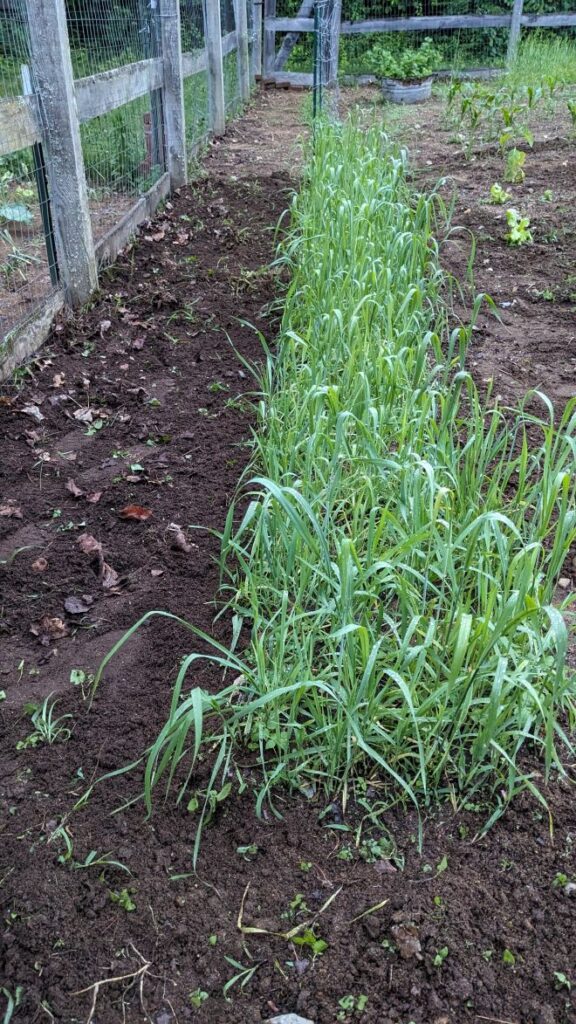
Can I grow Kamut? Is it worth it?
From my Kamut-growing experiments I’ve learned a lot, and found the experience enjoyable. It taught me a lot about where my food comes from, and, in the end, gave me a new appreciation for wheat farmers.
Although I may try small patches of different kinds of grains again, I’ve decided that for my bulk grains, I’ll leave the growing to the pros. I truly don’t think I’d have the patience or energy to try growing all of my wheat supply for the year. It was a fun experiment, and one that I might keep trying to get better at, just for fun. But I’m not tilling up my whole yard to grow wheat.
So while, technically, yes, you can grow Kamut (see my detailed instructions above), it’s not practical for me, in this phase of life, to try growing all of my own grains.
When I’m baking bread and other goodies several times a week, I go through a lot of wheat berries. And it’s more economical to spend my time growing and preserving veggies and herbs that I’ll use all year long (and I’m able to easily grow a year’s supply of!), rather than focusing on trying to grown enough grain for the year.
Need a grain mill?
These are my top picks. See my Complete Guide to Choosing a Grain Mill for more detailed info.
More like Kamut (Khorasan): A Complete Guide:
- Einkorn 101: history, milling, flaking, cooking & more
- Why I started milling my own flour
- Wheat berries: everything you need to know
- Fluffy whole wheat dinner rolls with fresh milled flour
- Kamut chocolate chip cookies (recipe)
- The World’s Best Resource on milling and baking with your own fresh flour

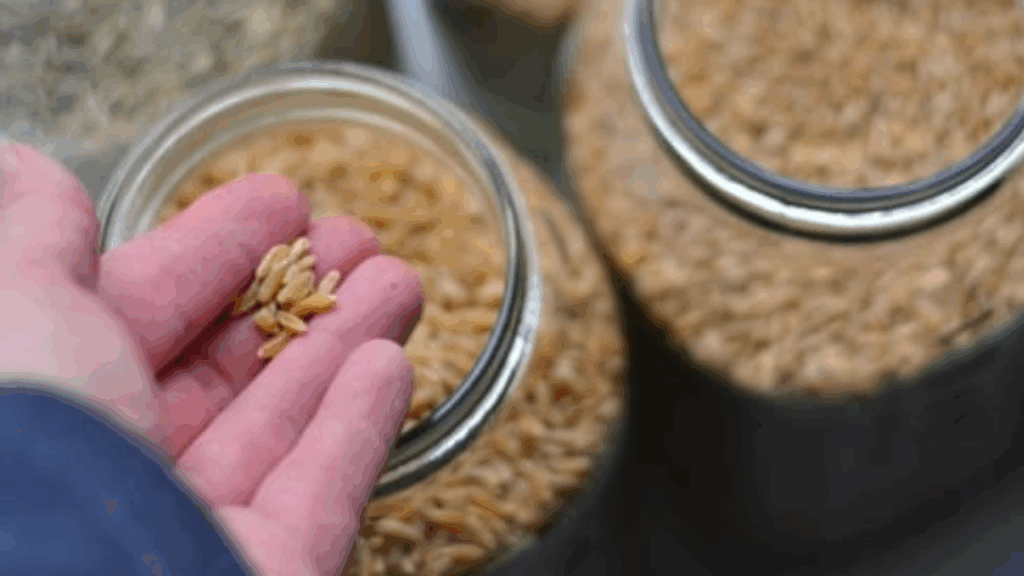
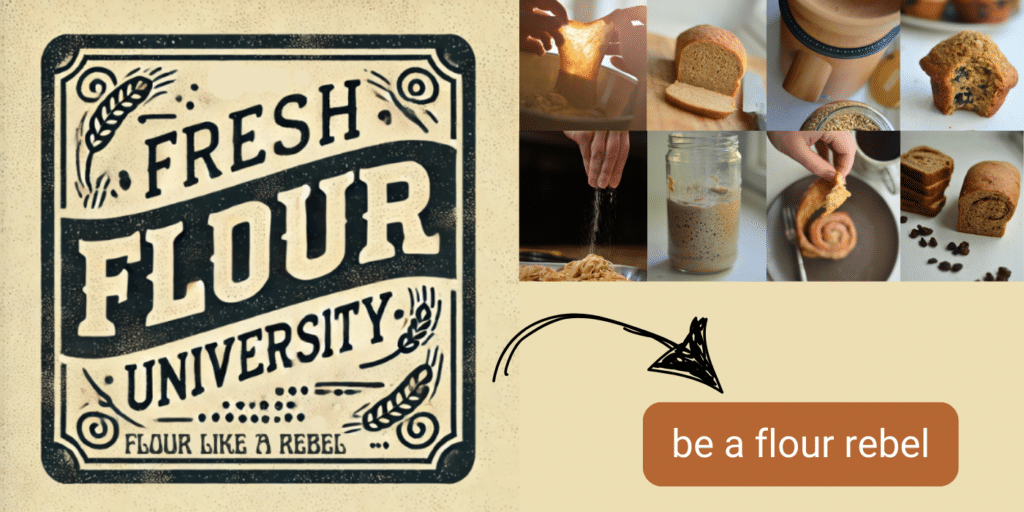



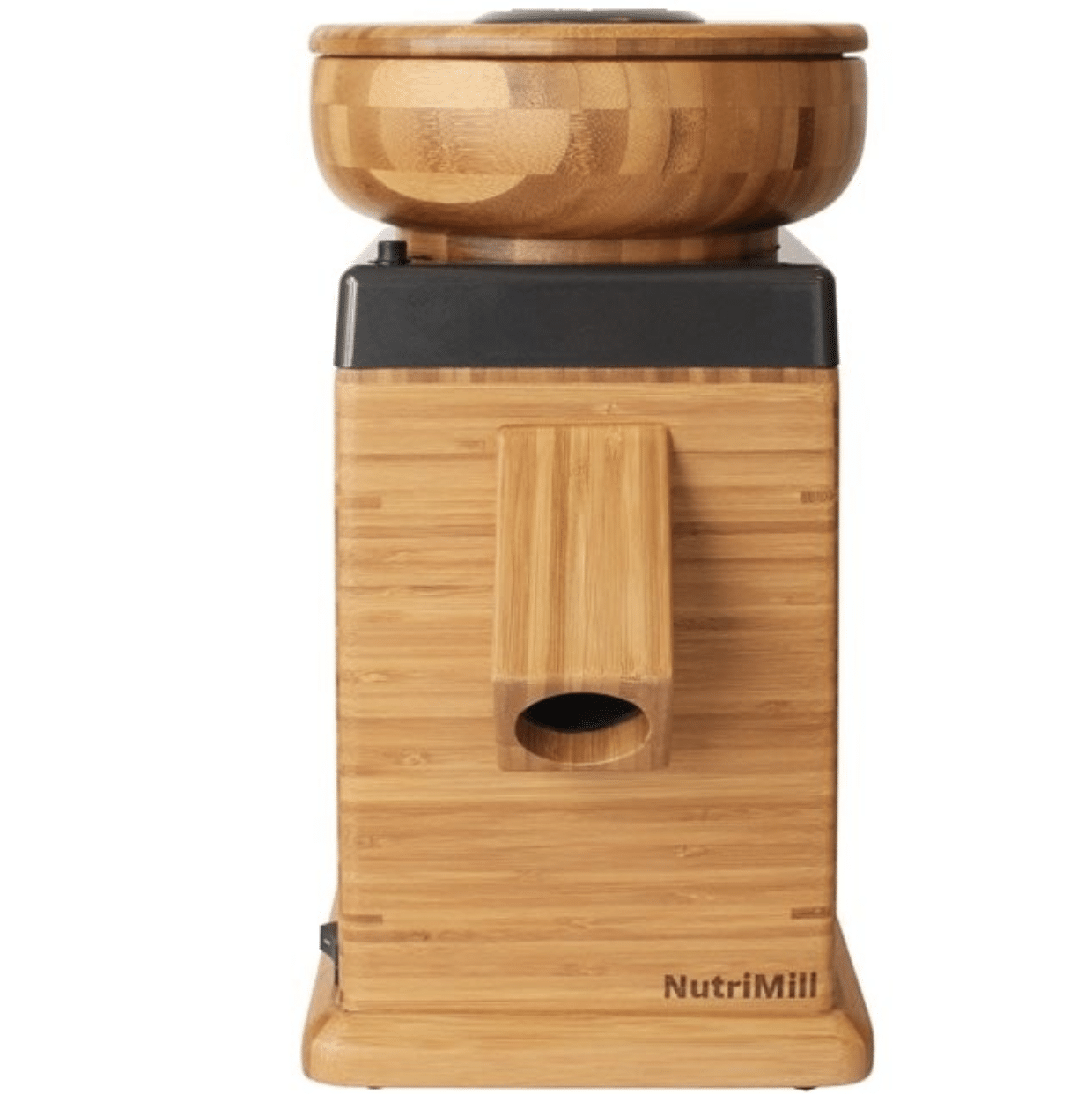
Thank you for sharing. I’ve never heard of this flour before. I’ll definitely be looking into this. I don’t use as Azure anymore. The shipping is just way too high for me now, but I love everything I’ve purchased in the past. can you recommend flour for celiac disease and for diabetic? I have a few friends I cook for one cannot have gluten and several others are diabetic and usually the bread I make for diabetic it turns out heavy or it rises and then after it’s baked it falls terribly anything you could recommend would be helpful. Thank you
Some folks who have issues digesting grains/gluten have said they can tolerate Kamut better than “modern” grains, but I would definitely start slow and proceed with caution. I don’t have any personal experience in that area, and Kamut DOES contain gluten.
Do you know where I can find Wheat Germ made from these products ? It must be organic. Thank you.